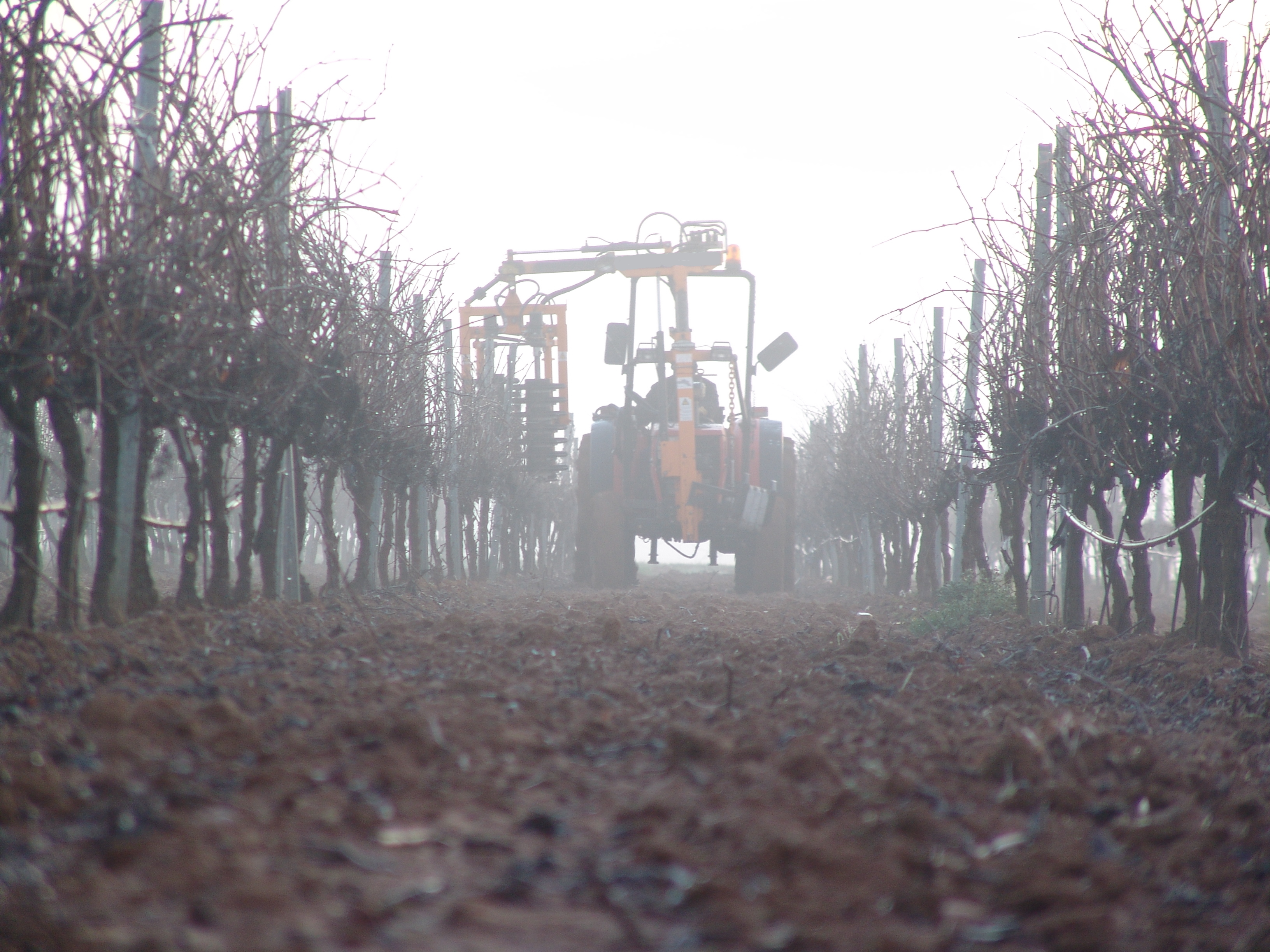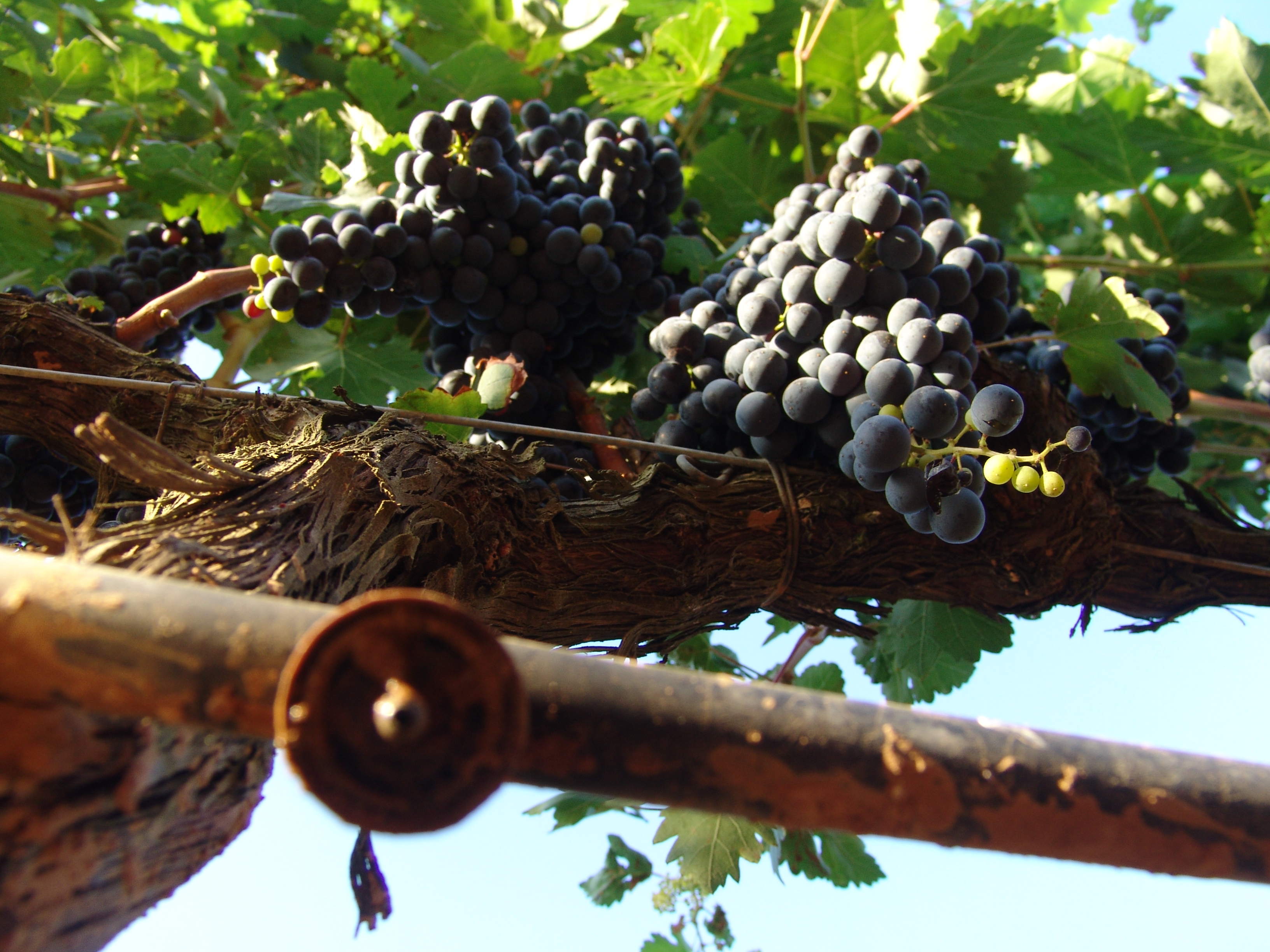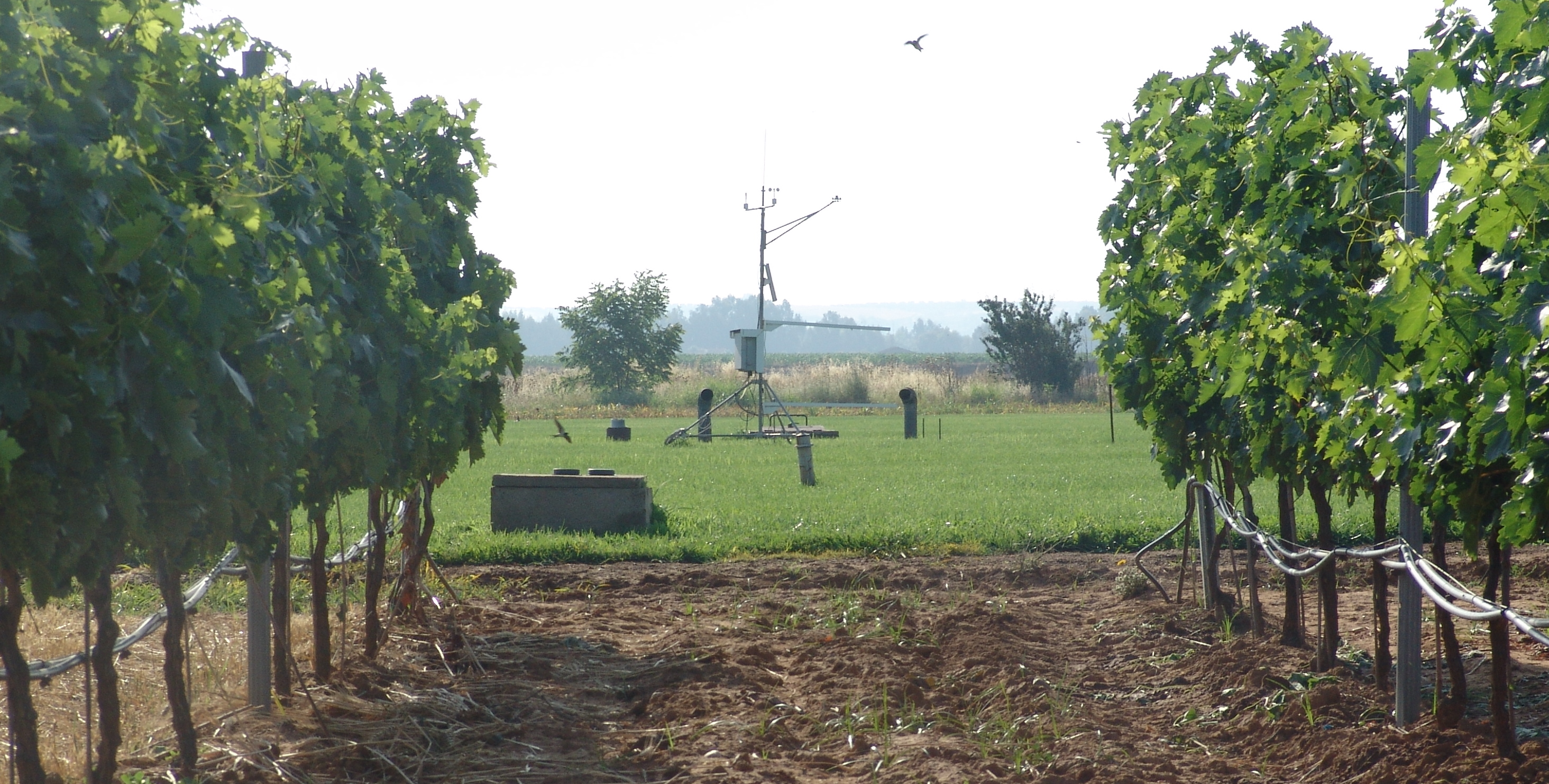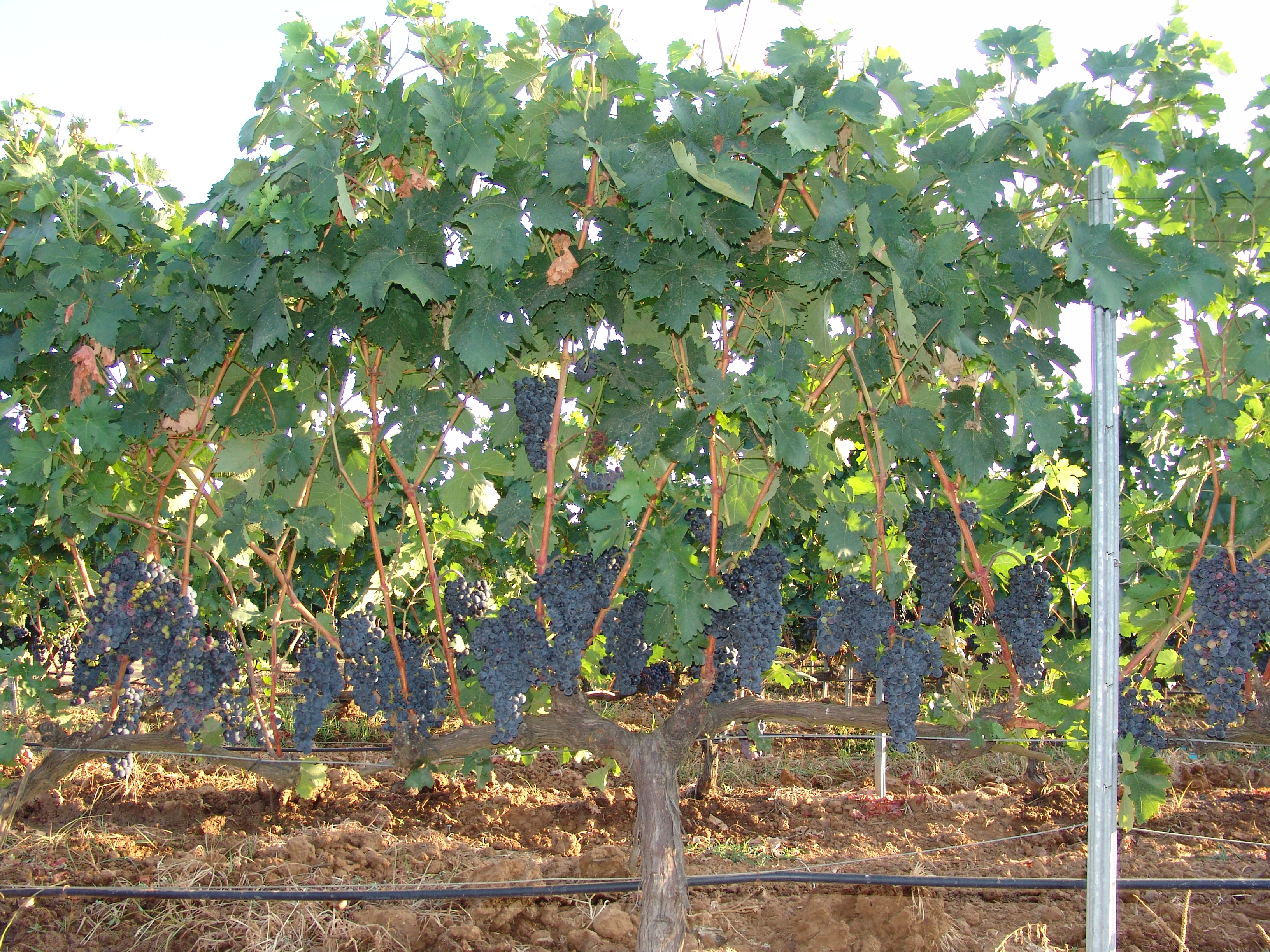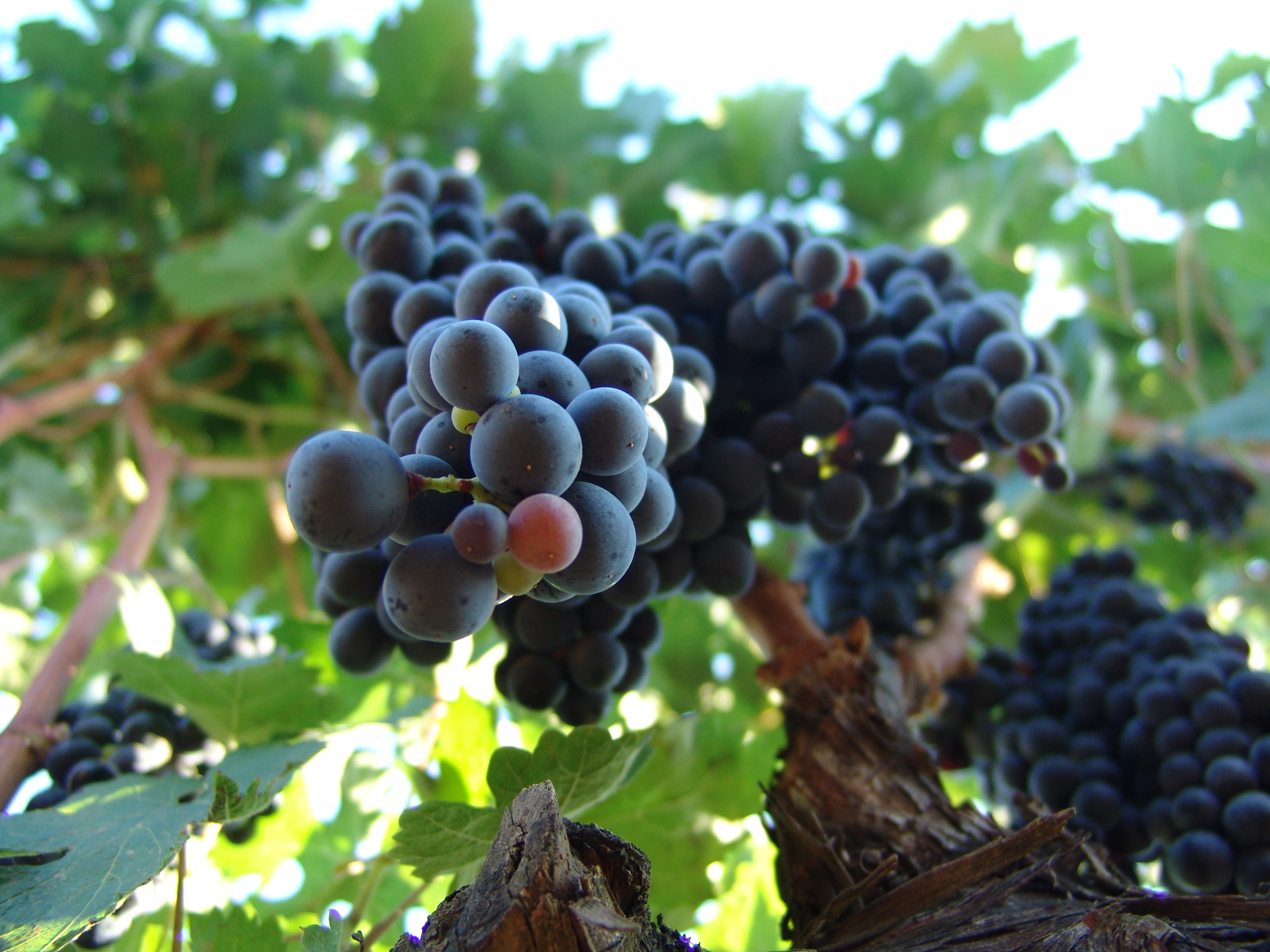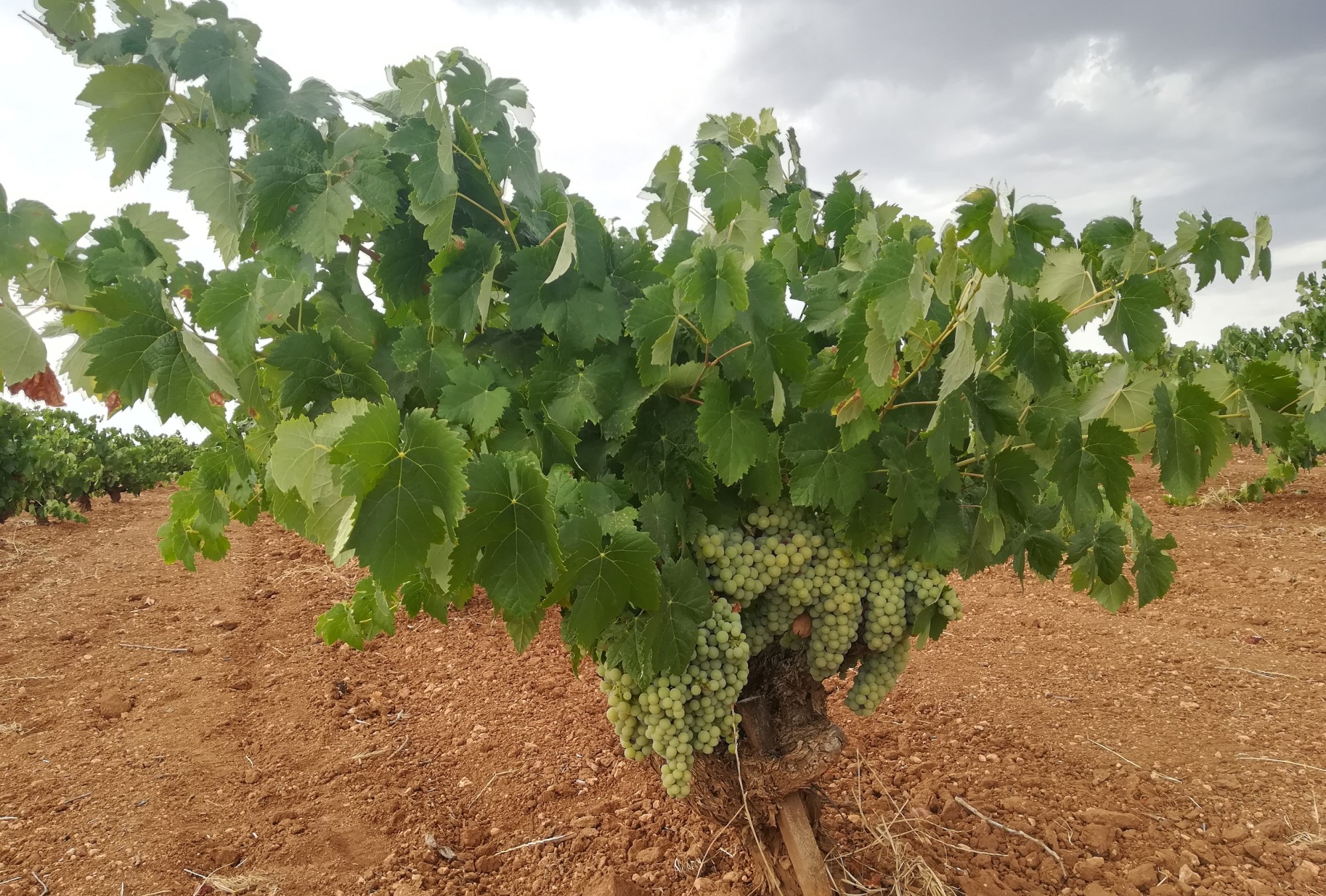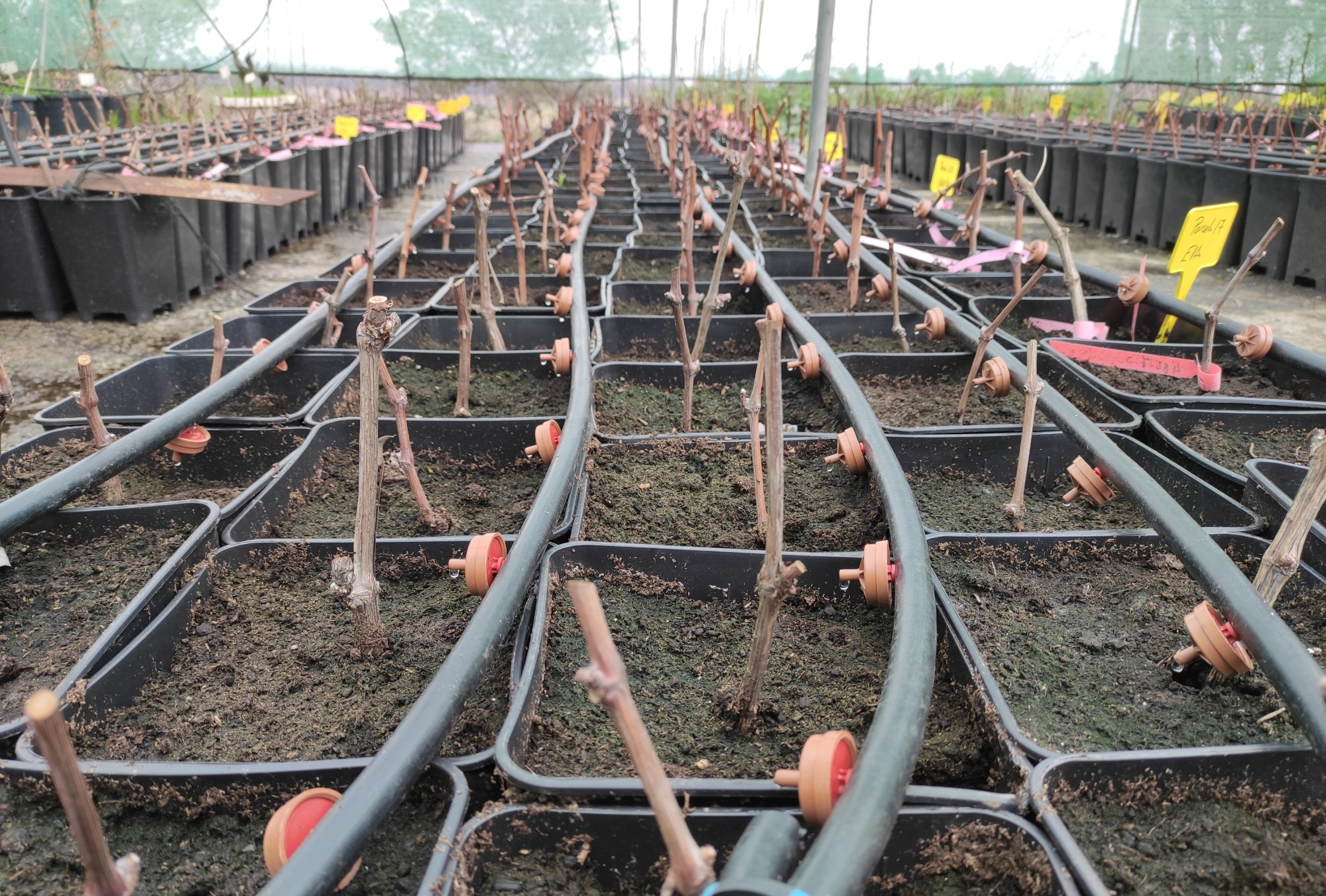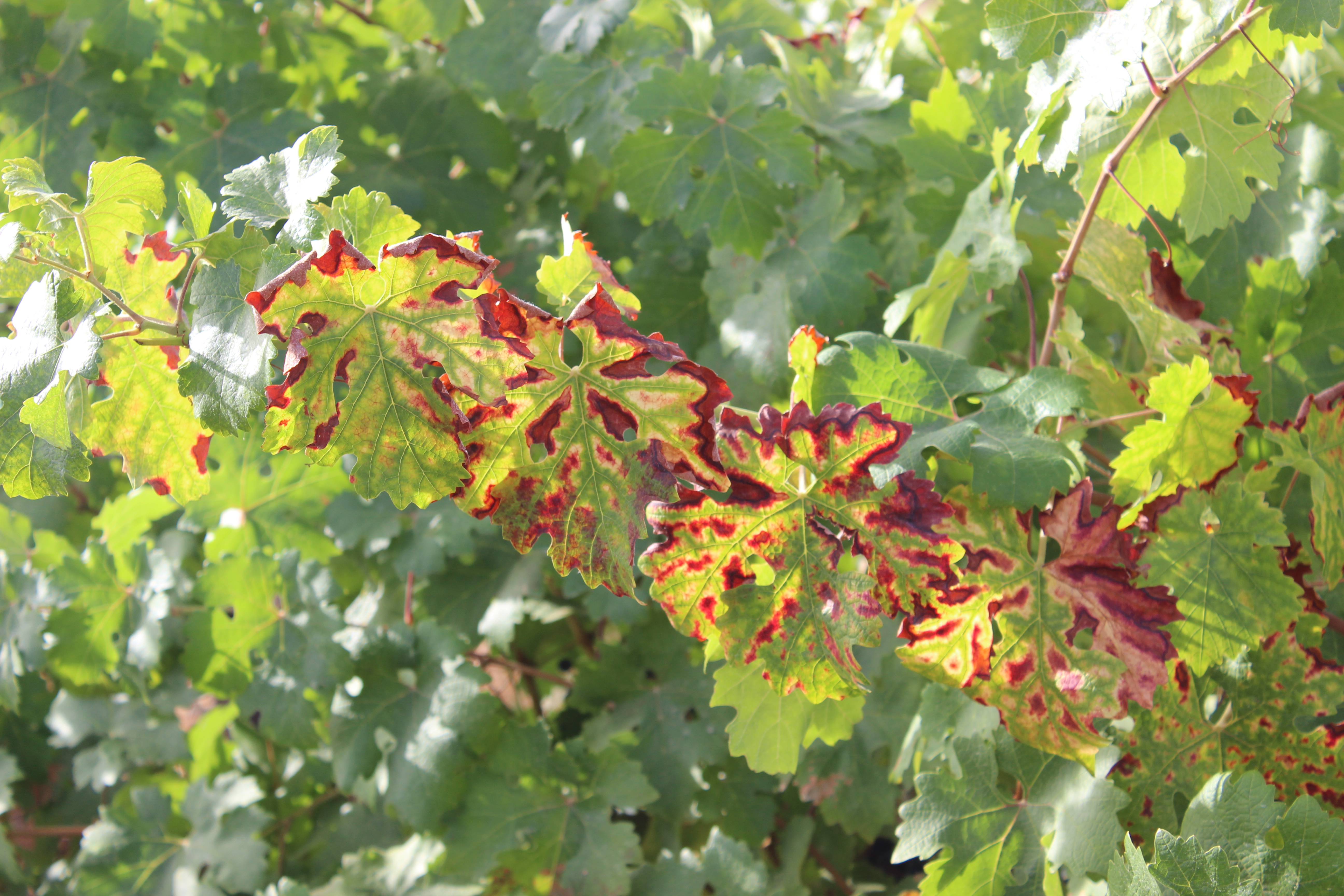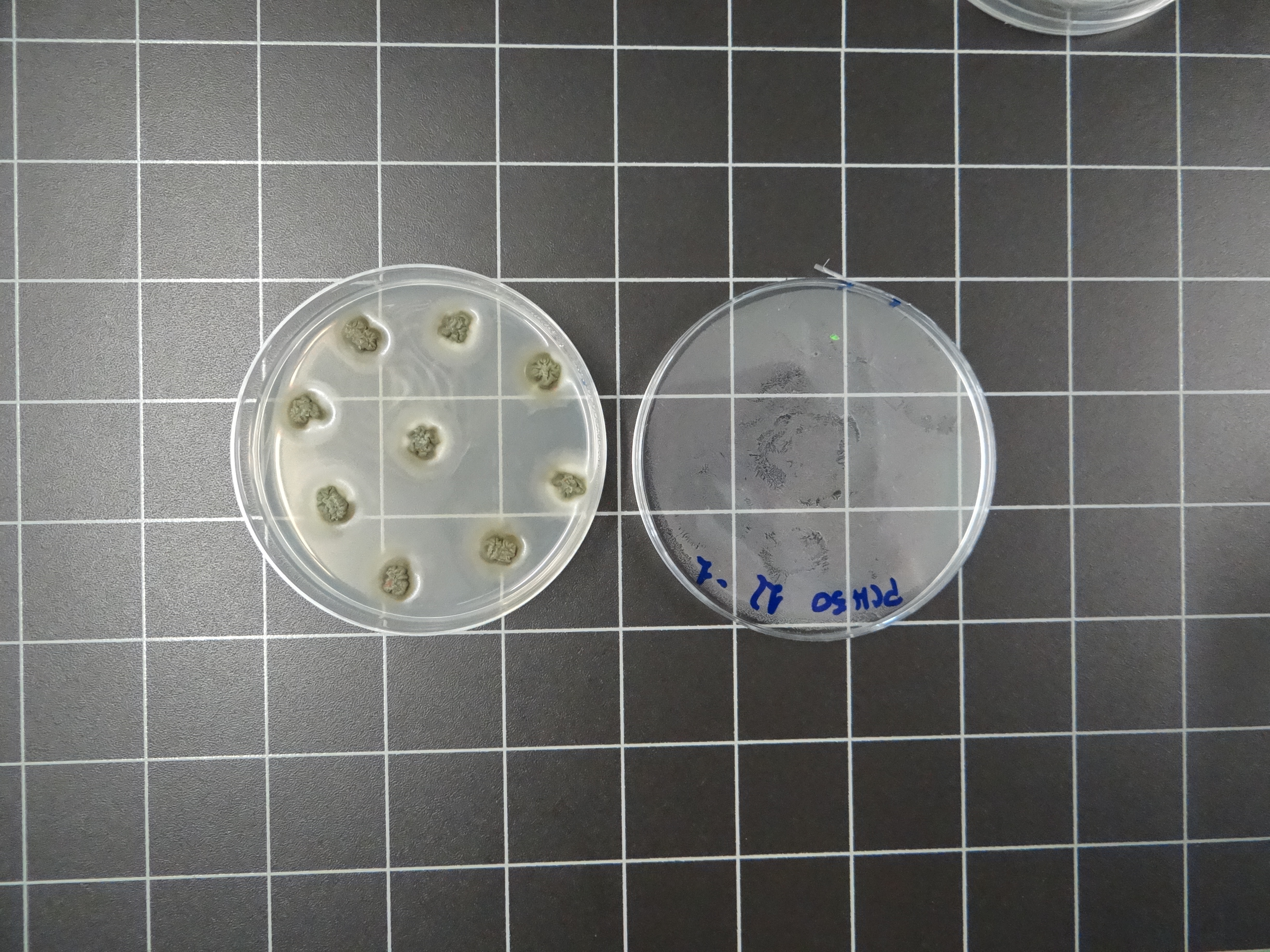
Grapevine
 General information
General information
The grapevine (Vitis vinifera, L.) is in Extremadura the third most popular crop in terms of the area of land it occupies with 86,300 hectares, following the grain cereal and the olive tree, and it represents 8.5% of the national crop area (MAPA, 2020). Although the area used for irrigation grapevine farming has continued to increase (32,000 hectares; ESYRCE, 2019), the main production system is still dryland farming with middle-size farms (5.6 hectares) which are primarily used to produce bulk wine. In the last decade there has been a change in winemaking in the region, i.e. a trend towards quality in the production with an increase in technology applied both to vineyards and bottled wine manufacturing methods.
 Crop requirements
Crop requirements
Grape production for winemaking faces several issues from a technical point of view. On the one hand, the soil and climate features in this area imply that the ripening takes place at high temperatures and under irregular distribution of annual rainfall, which is a situation that tends to become aggravated by climate change. On the other hand, the adoption of the irrigation farming system (in order to transform vineyards or in new plantations) involves a change in the training system employed and in agronomic management, demanding a different technical focus. In addition, adequate healthy plant material that is adapted to the soil and climate conditions of the region is limited, which does not contribute to reducing the need of inputs to help obtain a balanced quantity-quality production.
In this sense, CICYTEX is involved in various lines of research based on trials and studies on irrigation management (water requirements and irrigation strategies), growing techniques (pruning, training systems, plant management, control of crop load), health status (clone and health selection, trunk fungi), quality of the grape and use of by-products.
 Calculation of water requirements
Calculation of water requirements
Despite the grapevine having low requirements of water –it can develop its vegetative cycle with 300 mm of water (either rainfall and/ or irrigation)-, the required amount of water can vary from one vineyard to another. It will depend on various factors such as the variety, ability of the soil to retain water, atmospheric evapotranspiration demand, plantation density, fertilisation and the growing techniques in use.
On the other hand, it is not recommended to fully satisfy the water requirements of a grapevine being grown for winemaking purposes, except with the purpose of mass production. Additionally, climate change and the increase of irrigation areas demand a more efficient use of water, which may allow to maintain sustainable productions in economic and environmental terms. CICYTEX’s projects focus on obtaining proven information on irrigation strategies adapted to vineyard type and production objectives.
In this sense, deficit irrigation strategies have proven to be an effective tool to control de vigour of stocks in vigorous vineyards, improving quality, increasing water productivity and, at times, improving the quality of the grape in dryland grapevine farming.
 Vineyard growing and management techniques
Vineyard growing and management techniques
Optimising the productivity and profitability of the vineyard involves all the stages of growing a vineyard. Work has been carried out in order to find out the solution to various management processes, such as the training system, pruning, defoliation techniques and vegetative opening, etc.
An item of special interest amongst these studies is finding a balance between vegetative growth and production in order to improve, on the one hand, the maturation conditions of the grape (height of the trellis, clearing of clusters and branches, early defoliation) and, on the other hand, in order to focus on the microclimate surrounding the bunches so that a more favourable atmosphere can be created to attain the accumulation of compounds with high value in the wine sector (defoliation, vegetative opening on trellises).
Some novelty lines of research include the use of techniques for the delay of grape ripening through irrigation, late pruning and the crop forcing techniques; as well as the use of advance technologies to manage the vineyards (precision agriculture and automated irrigation).
 Grapevine clone and health selection
Grapevine clone and health selection
The vine growing sector in Extremadura occupies a large area of land, with nearly 50% autochthonous varieties that are nearly exclusively grown in the region. These include the Pardina, Cayetana, Alarije, Montúa and Eva varieties. However, the number of commercial clones is scarce, which is a problem for the creation of new plantations of these varieties. This circumstance brought about the need to maintain, put in value and promote the use of autochthonous vine (Vitis vinifera L.) growing materials, as part of the phytogenetic wealth of Extremadura, preserving the current clones under the “custody” of CICYTEX and improving them with the addition of new clones with specific phenotypical features, as well as using them as plant material for interested plant incubators to be able to establish their base material fields.
 Diseases and pests
Diseases and pests
Vine growing in Extremadura has been affected by certain pests and diseases which require correct management in order to prevent significant crop losses. The emerging pests include the green mosquito and the spider, which are more and more frequent, as well as the grape moth. With regards to diseases, oidium is endemic in the region, and so is mildew or botrytis cinerea in years of favourable climate conditions. However, the most concerning health issues for the grapevine at present are undoubtedly grapevine trunk diseases (GTD) such as esca, dead arm or eutypa dieback in plantations that are fully productive and Petri and black foot disease in new vineyards. At CICYTEX, we work actively to solve these issues in response to the demands of the vine and wine sectors. Studies on i) origin and diagnosis: isolating and identifying the fungi that cause the disease; ii) epidemiology: studying the abiotic and management factors of the crop that affect their pathosystem and iii) testing the effectiveness of sustainable solutions on the development of the pathogens and the disease.




